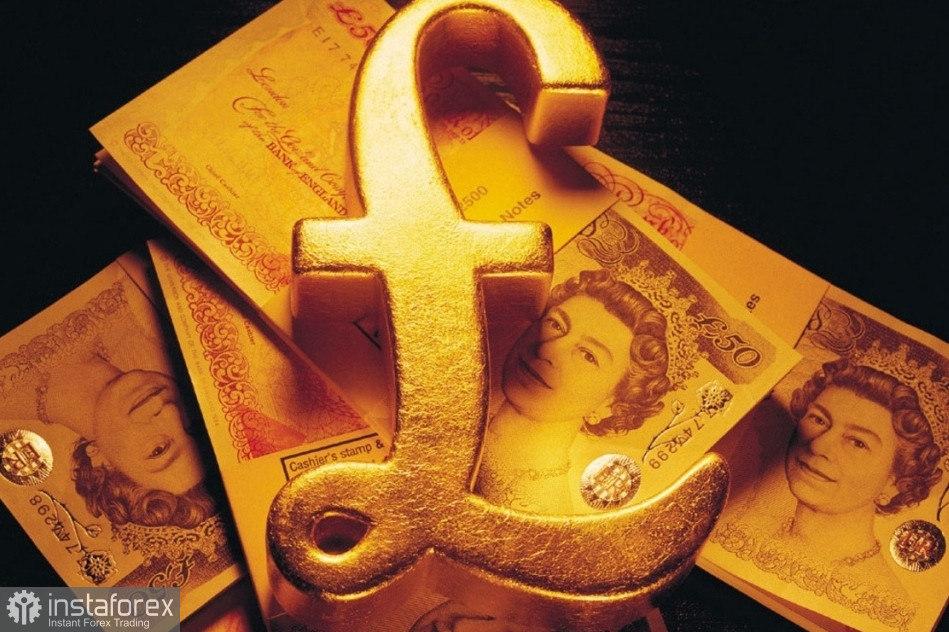The British pound has already fallen below the 12th figure and is clearly not ready to stop there, as hard times are ahead with the continuation of the cost of living crisis in the UK, high inflation in the region of 10.0%, energy disruptions, and the economy sliding into recession - from which it will be quite difficult for the new prime minister to get out without another billion aid packages that are very expensive – given the current level of interest rates.
Speaking of rates, yesterday the Bank of England voted to raise the base rate to 2.25% from 1.75%, as the central bank is striving with all the "fibers of its soul" to overcome high inflation exceeding five times the target. Yes, inflation in the UK fell slightly in August, but remained at 9.9% year-on-year, which is much higher than the BoE's 2% target. Energy and food prices have risen the most, but even core inflation, excluding these components, is still 6.3% year-on-year.

By the way, this is the seventh consecutive time when the central bank raises rates, raising them to the level last seen in 2008. The press release explaining its decision points to the volatility of wholesale gas prices and the government's decision to impose restrictions on the payment of electricity bills, which, according to the central bank, will limit the further growth of the consumer price index. Nevertheless, the report says that since August there have been new signs of continued strengthening of domestic inflation, forcing the BoE to act ahead of the curve. "The labor market is limited, and internal costs and price pressures remain elevated. Although the electricity bill subsidy reduces inflation in the short term, it also means that household spending is likely to remain weaker than predicted in the August report," the report notes.
Five members of its Monetary Policy Committee voted for a 0.5 percentage point rate hike, and three voted for a 0.75 percentage point increase. One member voted for a 0.25 percentage point increase.
Such a decision by the BoE could contribute to the pound's growth, but not in the current conditions, when the economy is leaping towards recession, the energy crisis is gaining momentum, and the new British Prime Minister Liz Truss is preparing another program of economic support. The Business Association of the British Chamber of Commerce, together with the BoE, expect that the UK will enter a recession before the end of the year. In addition to surges in energy prices, the country continues to face supply disruptions due to Covid-19 and Brexit, which reduces consumer sentiment and negatively affects retail sales.
But the UK is not alone in raising interest rates. Most recently, the European Central Bank raised rates by 75 basis points, the Swiss central bank also raised rates by 75 basis points, as did the US Federal Reserve.
As I noted above, the pound also collapsed to the 12th figure and the pressure on the pair is only maintained. Only after returning to 1.1270 will it be possible to expect bulls to become more active at the end of this week. This will create quite good chances for a larger upward correction, which will open a direct road to the area of highs: 1.1320 and 1.1360. The farthest target in the current bullish movement will be the 1.1400 area. If the pressure on the pair persists, bulls will have to try very hard to stay above 1.1215. Without doing this, you can see another major sale by 1.1160 and 1.1110.
As for the technical picture of EURUSD, so far the bulls are resisting with all their might and do not want to surrender the market, but apparently this is inevitable. At the beginning of the European session, the euro has already returned to an annual low and clearly nothing good is expected in the near future. The bulls' task is to protect the support of 0.9810, but it is difficult to say how to do this amid weak statistics. A breakthrough of 0.9810 will push the euro lower at 0.9770, and a breakdown of this low will open up a real prospect for an exit at 0.9720 and 0.9660. It is quite difficult to talk about the prospects for the growth of risky assets in the current conditions. To begin with, the bulls need to return to 0.9860, which will allow them to reach 0.9900. It will be possible to talk about a return to parity only after a breakthrough of 0.9952 and 0.9996.





















